The latest FOMC meeting caused a stock rally as Jerome Powell turned more “dovish” than expected. While Powell did note that progress on inflation has been lackluster, the announcement of the reversal of “Quantitative Tightening” (QT) excited the bulls.
Beginning in June, the Committee will slow the pace of decline of its securities holdings by reducing the monthly redemption cap on Treasury securities from $60 billion to $25 billion. The Committee will maintain the monthly redemption cap on agency debt and agency mortgage‑backed securities at $35 billion and will reinvest any principal payments in excess of this cap into Treasury securities”
Of course, the reversal of QT means a buyer of Treasury bonds is returning to the market, increasing overall market liquidity. It also means the Treasury will issue $105 billion less in gross in Q3. The bond market also got the memo, as the Fed’s return to the bond market suggests lower yields in the months ahead, easing financing pressure in the economy.
We have previously discussed the following chart of “liquidity,” which subtracts the Treasury General Account and Reverse Repo from the Federal Reserve’s balance sheet. The recent market decline coincided with a sharp drop in liquidity as the TGA account surged to almost $1 trillion from April tax receipts. Over the next few months, that liquidity in the TGA will get released into the economy. At the same time, the Federal Reserve will reduce its balance sheet runoff, which will further add to overall liquidity.
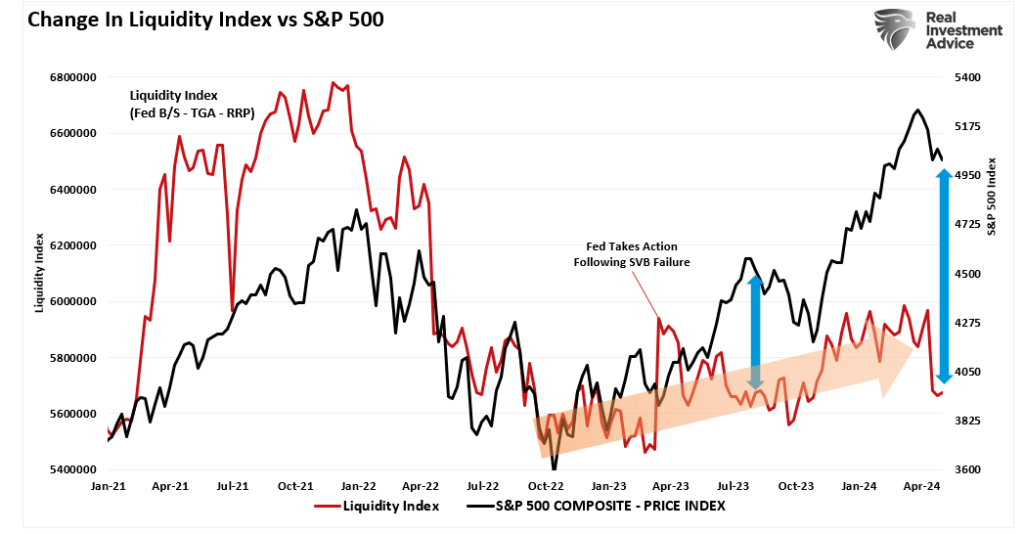
Notably, the market has weathered the reduction in liquidity to date. While higher rates and the reversal of “Quantitative Easing” led to a 20% market decline in 2022, investors began to “front run” the Fed in anticipation of rate cuts and a return to balance sheet expansion.
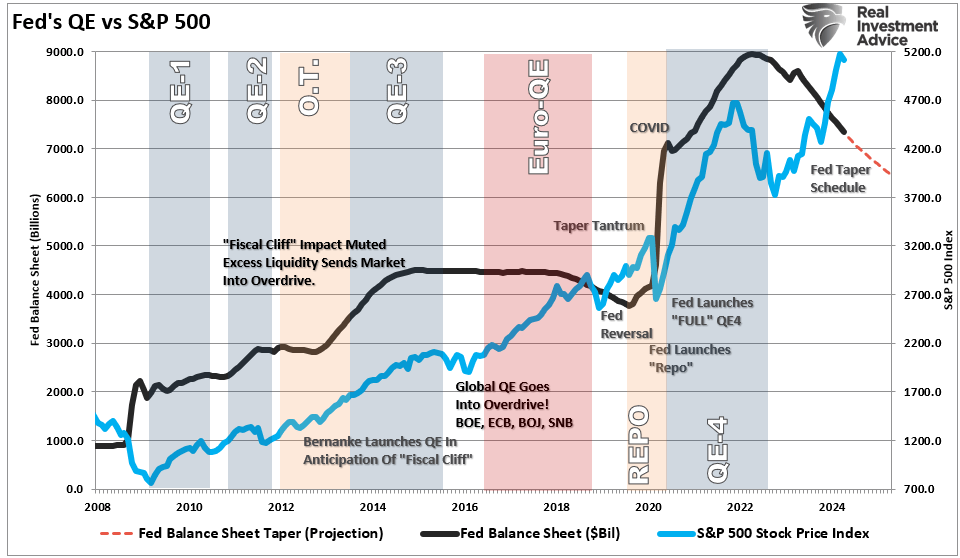
Given that “QE” programs increase bank reserves by crediting their reserve accounts for bonds bought, the introduction of the tapering of “QT” is the first step in increasing system liquidity.
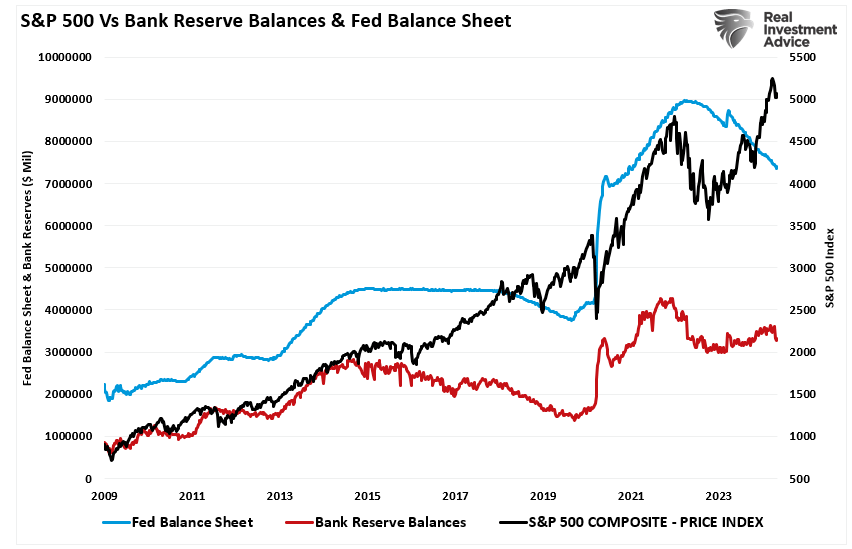
This is why there was a vicious stock rally last week. For the markets, this rang “Pavlov’s Bell.”

The Correction May Not Be Over Just Yet
While the stock rally last week certainly surprised many, given the weaker-than-expected economic data, there are some reasons to suspect the correction may not be complete just yet.
In mid-March, we suggested that due to the “buyback blackout” window, a 5-10% correction was likely. To wit:
“As noted, the market remains in a bullish trend. The 20-DMA, the bottom of the trend channel, will likely serve as an initial warning sign to reduce risk when it is violated. That level has repeatedly seen ‘buying programs’ kick in and suggests that breaking that support will cause the algos to start selling. Such a switch in market dynamics would likely lead to a 5-10% correction over a few months.“
The following month, the market violated that 20-DMA, and selling commenced, leading to a 5.5% drawdown. However, buyers initially stepped back in at the 100-DMA, which has now acted as support over the last two weeks. With the rally last week, the stock rally is now testing crucial resistance at the 50-DMA.

The stock rally is at a critical juncture, and what happens next will determine whether the current market correction is over. Three possible scenarios over the next month or so exist.
Path A: The market breaks above the 50-DMA and retests previous highs. While this path is indeed possible, the markets are overbought on a very short-term basis, suggesting further price appreciation will become more challenging.
Path B: Many investors were surprised by the recent market decline. As such, these “trapped longs” will likely use the current stock rally as an opportunity to reduce risk. Another retest of the 100-DMA seems probable before the next leg of the current bull rally ensues.
Path C: With earnings season mostly behind us and stock buybacks set to resume, a reversion to the 200-DMA seems the least probable. However, as is always the case, it is a risk that we should not ignore. A sharp uptick in inflation or stronger-than-expected economic data could spark concerns about a “higher for longer” Fed policy. Such an event would likely lead to a further repricing of risk assets.
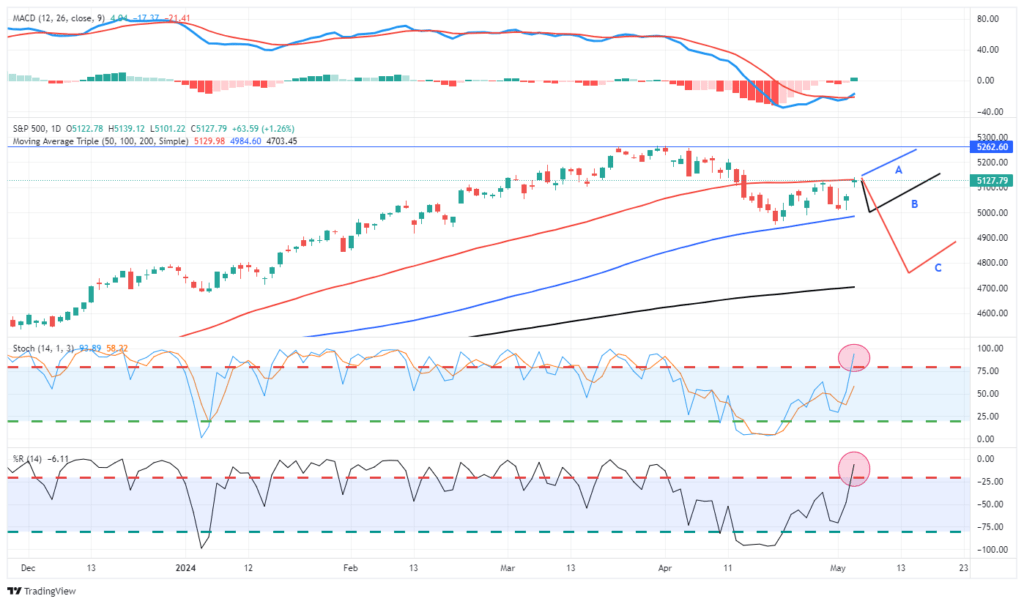
I am less concerned about “Path C” for three reasons.

Little Evidence Of Market Stress
While a more profound decline is certainly possible, there is little evidence of market stress. For example, even during the latest correction, volatility remained very subdued. Yes, volatility increased during the decline but failed to reach the levels witnessed during the 10% correction last summer.
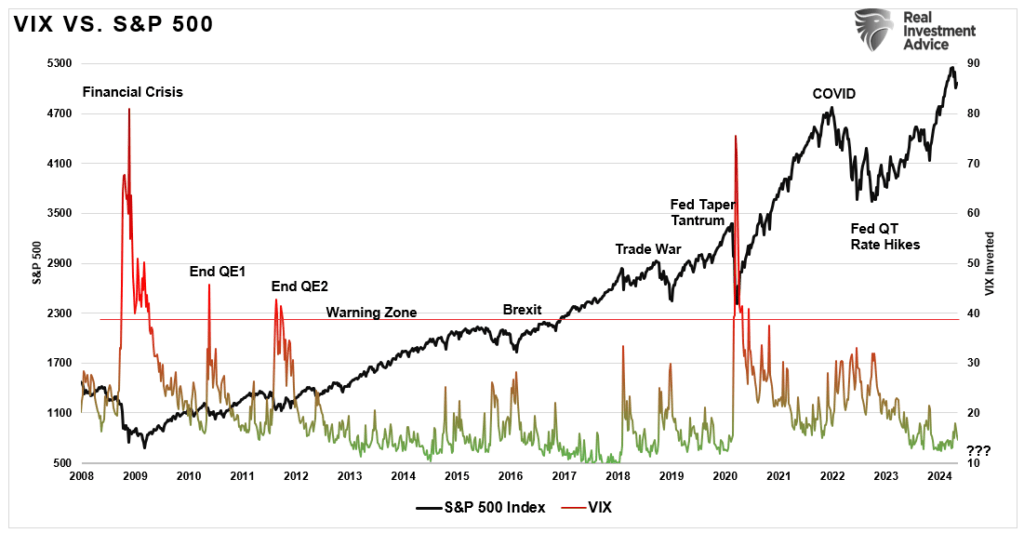
Secondly, a substantially deeper market decline would likely widen credit spreads between junk bonds and treasuries. That was not evident during the latest market decline, as spreads remain well below the long-term average. Watching credit spreads is the best indicator for investors to determine market risks.

Third, the window for stock buybacks reopens this week, and with Apple and Google announcing $110 and $70 billion programs, respectively, those two companies alone will account for roughly 18% of this year’s slated activity.
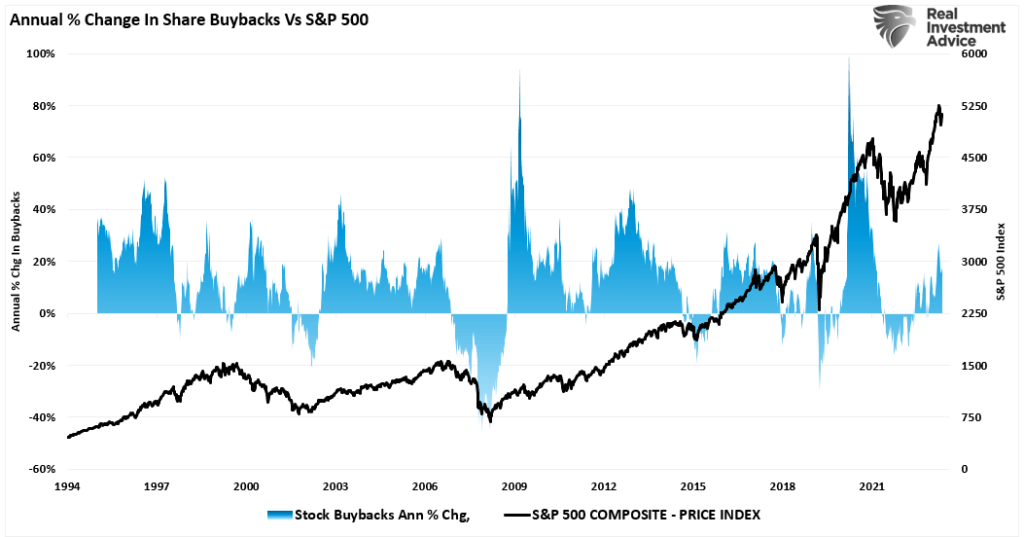
Combining current sentiment, buybacks, and liquidity hopes makes the stock rally over the last two weeks logical. Furthermore, given that early summer months tend to be bullish for markets during election years, it is likely too soon to be overly bearish.

However, we are also not completely oblivious to the numerous risks that lie ahead. Weaker economic data, the lag effect from higher rates, and sticker inflation pose portfolio risks worth monitoring. Furthermore, in the two months before the election, investors tend to de-risk their portfolios. This year, we could see a larger-than-normal event, given the risks associated with the current matchup.
While Powell’s “dovish” twist fueled the current stock rally, continue to manage risk accordingly. There is a reasonable chance this correction is not over just yet.


